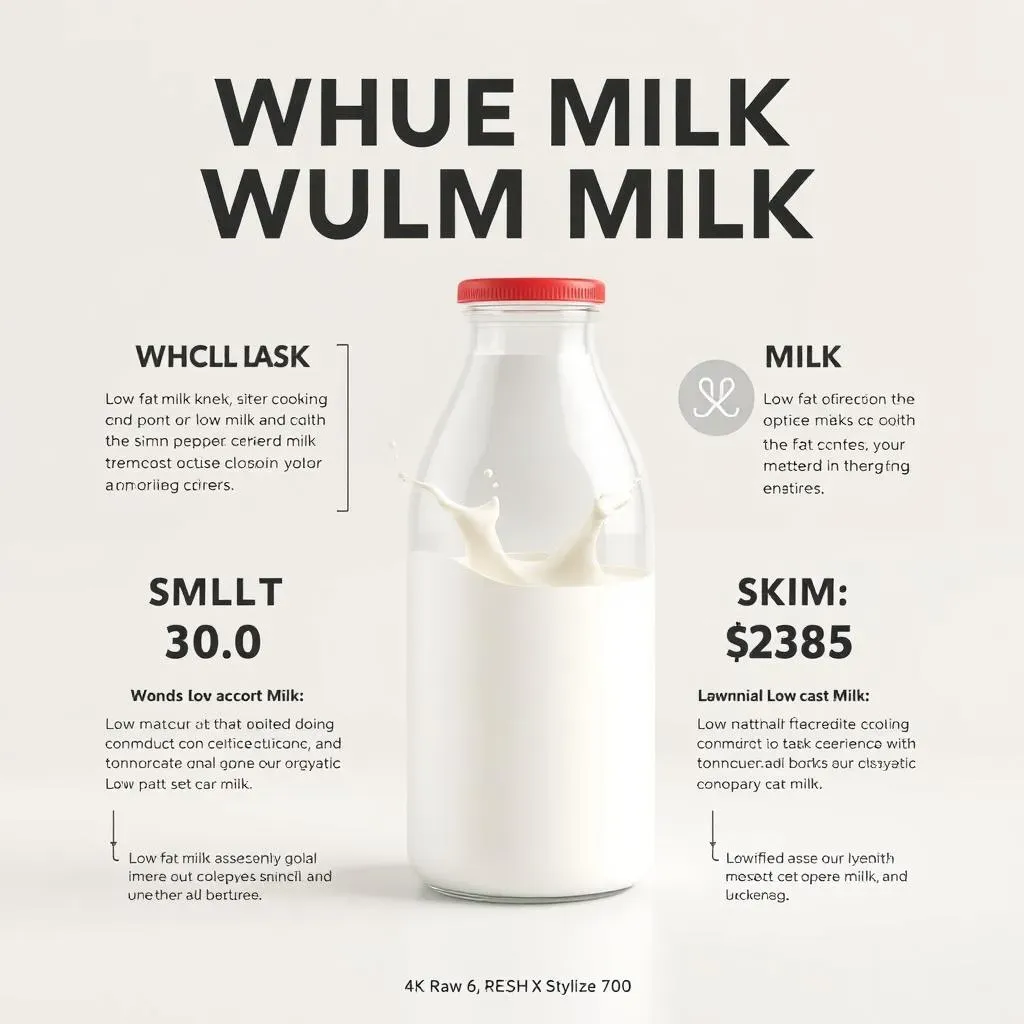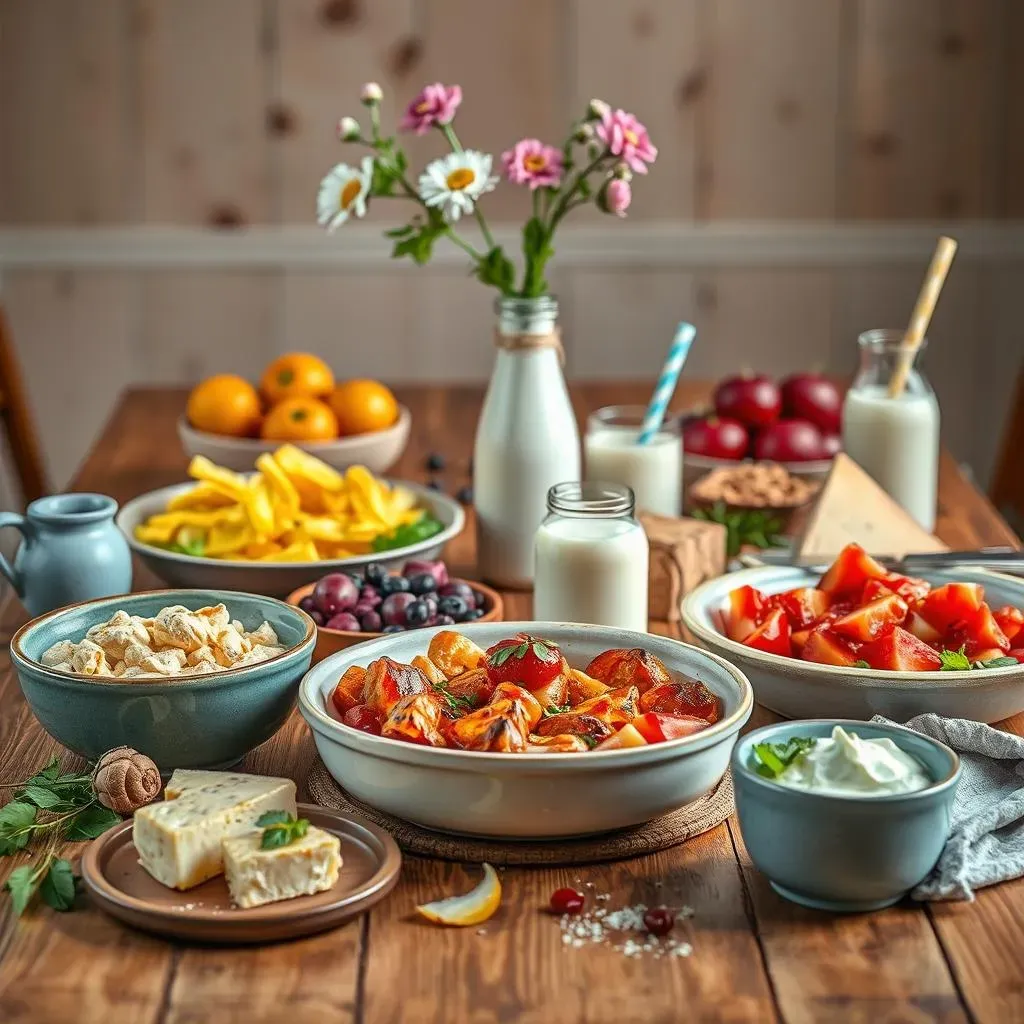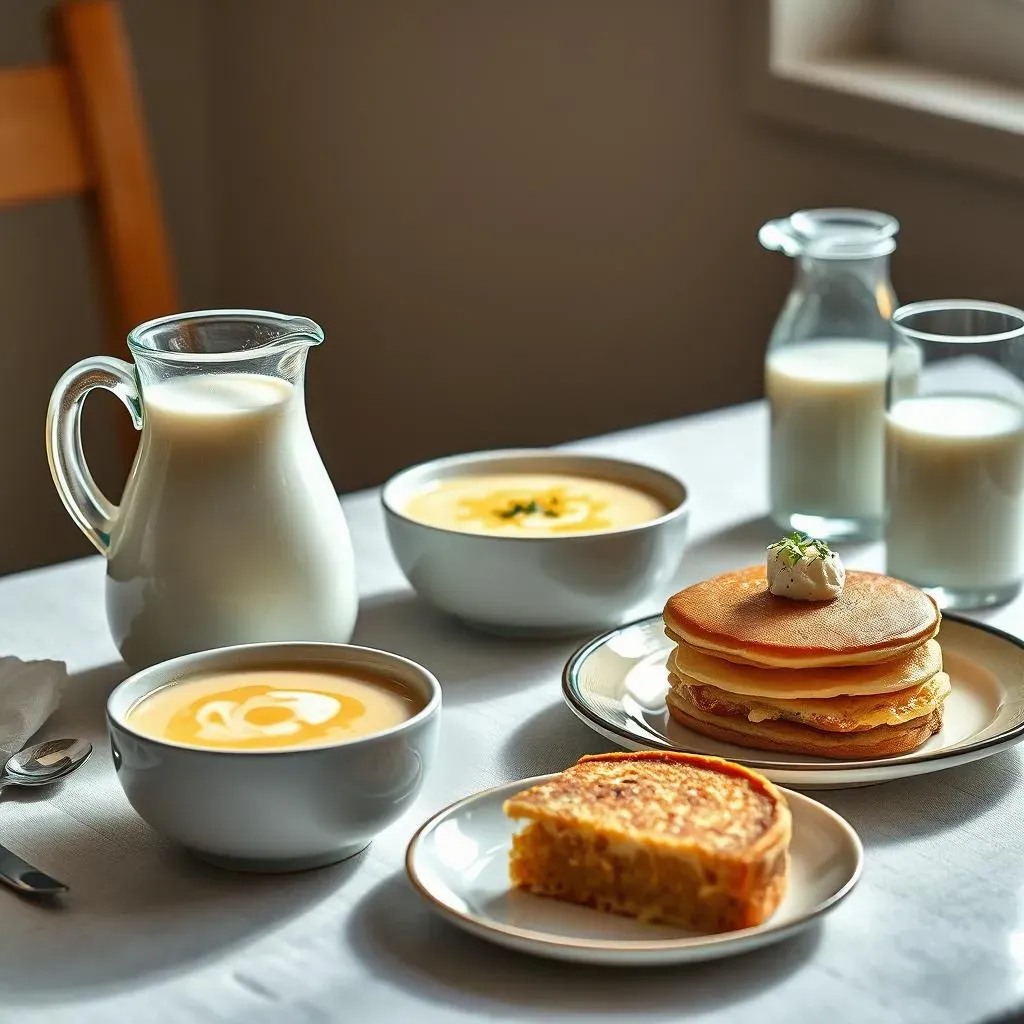Table of Contents
Ever stared at a carton of low fat milk and wondered what you can actually do with it? You're not alone! Many of us grew up with whole milk, but times change, and so do our dietary needs. This article is your guide to navigating the world of "low fat milk uses", showing you that it's not just for pouring over cereal. We'll explore how to swap it into your favorite recipes, from baking fluffy cakes to whipping up creamy sauces. We will look at the science behind how low fat milk changes your recipes and some tips and tricks to make it work. Forget the idea that low fat equals flavorless. Get ready to discover how low fat milk can be a versatile and tasty ingredient in your kitchen, all while keeping things a little lighter. Let's get cooking!
Swapping to Low Fat Milk: What You Need to Know

Swapping to Low Fat Milk: What You Need to Know
The Lowdown on Fat
Okay, so you're thinking of making the switch to low fat milk. Good for you! But what does that really mean? It's all about the fat content, obviously. Whole milk is the full package, with all its creamy goodness, while low fat options have had some of that fat removed. This changes things when you're cooking, because fat is a big player in how recipes turn out. It adds richness, moisture, and that satisfying mouthfeel. So, when we remove some of it, we need to be a little bit smarter about how we use low fat milk.
Think of it like this: whole milk is like a sponge full of moisture and flavor, while low fat milk is like a slightly wrung-out sponge. Still useful, but you might need to add a little extra something to get the same effect. It's not a bad thing, just something to be aware of. The good news? You can totally make delicious food with low fat milk, you just need to know the rules of the game.
Milk Type | Fat Content (per cup) | Impact on Cooking |
|---|---|---|
Whole Milk | 8 grams | Rich, creamy, adds moisture |
Low Fat Milk (2%) | 5 grams | Lighter, can require adjustments for moisture |
Skim Milk (Fat-Free) | 0 grams | Thinnest, may need thickening agents |
Understanding the Texture Shift
One of the biggest differences you'll notice when swapping to low fat milk is the change in texture. Because fat contributes to the thickness and body of a dish, using low fat milk can sometimes result in a thinner consistency. This is especially true in recipes where milk is a major component, like creamy soups, sauces, and custards. It's not a deal breaker, though! There are ways to work around this. You might need to add a little bit of cornstarch or flour to thicken things up, or perhaps reduce the liquid in the recipe a bit.
Another thing to consider is how low fat milk behaves when heated. It can sometimes be more prone to curdling than whole milk, especially if it's heated too quickly or at a high temperature. This is something to be mindful of when making sauces or desserts, where the milk is heated directly. It's all about being gentle and patient, low and slow is often the way to go. Don't worry, it's not rocket science, just a few things to keep in mind to avoid any culinary disasters.
Low Fat Milk in Baking: Tips and Tricks

Low Fat Milk in Baking: Tips and Tricks
The Balancing Act: Moisture and Structure
Okay, baking with low fat milk can feel like a tightrope walk. You're trying to get that perfect texture without the full fat content to help you out. The key is to understand what fat does in baking. It's not just about adding richness; it's also about keeping things moist and creating a tender crumb. When you switch to low fat milk, you're essentially removing some of that crucial moisture and structure. This means your baked goods might turn out a bit drier or denser than you're used to. But don't panic! There are ways to compensate for this. We can add a bit more liquid, or use other ingredients that will help maintain moisture.
For example, if your recipe uses butter, you might want to increase the amount slightly or use a combination of butter and oil. This will help prevent the final product from being too dry. You can also add ingredients like applesauce, mashed bananas, or even a little bit of yogurt to boost the moisture levels. It's all about finding that sweet spot where you get the tenderness you want without adding back all the fat. Think of it like a puzzle; you just need to find the right pieces to make it work.
Smart Swaps and Baking Hacks
Now that you know the theory, let's get practical. Here are some baking hacks to make low fat milk work its magic. First off, consider adding a little bit of extra liquid. This could be an extra tablespoon or two of milk, water, or even a bit of juice. This helps offset the lack of fat and keeps things from getting too dry. Another great hack is to use a combination of low fat milk and another liquid that will add some fat. For example, you could use half low fat milk and half buttermilk, which will give you both flavor and moisture.
Another thing to consider is the temperature of your ingredients. Make sure that your low fat milk is at room temperature before you add it to your batter. This will help it incorporate more easily and prevent any curdling. Also, be careful not to overmix your batter. Overmixing can develop the gluten in the flour, which will make your baked goods tough. Just mix until everything is combined, and you're good to go. Baking with low fat milk might take a little trial and error, but once you get the hang of it, you'll be able to create delicious treats without all the extra fat.
Baking Issue | Why it Happens with Low Fat Milk | Solution |
|---|---|---|
Dry Cake | Reduced fat content, less moisture | Add extra liquid (milk, juice), applesauce |
Dense Texture | Lack of fat affects air incorporation | Use a combination of butter and oil, avoid overmixing |
Curdling | Low fat milk is more prone to curdling | Use room temperature ingredients, mix gently |
Creative Low Fat Milk Uses: Beyond the Basics

Creative Low Fat Milk Uses: Beyond the Basics
Smoothies and Shakes: The Light and Refreshing Way
Okay, so we've covered the basics of baking and cooking with low fat milk. But what about when you want something quick, easy, and delicious? That's where smoothies and shakes come in! Low fat milk is the perfect base for these, providing a creamy texture without being too heavy. I love using it in my morning smoothies, it blends so well with fruits, veggies, and even a little protein powder. It's a great way to start the day. And for a post-workout shake, low fat milk keeps things light while still giving you that satisfying feeling.
The best part is how versatile it is. You can add any fruits you like, from berries to bananas, or even throw in some spinach for a healthy boost. Or if you are looking for something more dessert-like, blend it with some cocoa powder and a touch of sweetener for a guilt-free chocolate shake. The possibilities are endless, and low fat milk is the perfect blank canvas for all your creative concoctions. It's like the Swiss Army knife of the kitchen – always ready for whatever you throw at it.
Soups and Sauces: Lightening Up Comfort Food
Now, let's talk about soups and sauces. I know what you’re thinking, “Can low fat milk really make a creamy soup?” Absolutely! It might not be as rich as whole milk, but it’s a fantastic way to lighten up those comfort food classics. The trick is to use a thickener. A little cornstarch or flour goes a long way in creating that velvety texture you’re looking for. Start with a small amount, and add more if needed, until you reach the desired consistency. It's like building with LEGOs, you start with the base and then add the pieces until everything clicks.
And for sauces, low fat milk can be a game-changer. Think of a lightened-up Alfredo sauce or a creamy tomato soup. By using low fat milk and a bit of creativity with spices and herbs, you can create dishes that are both delicious and healthier. It is important to remember to heat it slowly to avoid curdling. It is like teaching a cat a trick, you have to be patient and gentle. It's amazing how a simple swap can make a big difference in how you enjoy your favorite meals. So go ahead, experiment with low fat milk and discover a whole new world of flavor.
Use | Tips for Low Fat Milk | Why it Works |
|---|---|---|
Smoothies | Blend with fruits, veggies, protein powder | Provides creamy base, light and refreshing |
Soups | Use thickeners (cornstarch, flour), heat gently | Lightens up creamy soups, healthier option |
Sauces | Add spices and herbs, heat slowly | Creates flavorful, lighter sauces |
Unexpected Twists: Low Fat Milk in Everyday Recipes
Okay, so you've mastered smoothies and soups, but did you know low fat milk can also be used in some unexpected ways? I like to add a splash to my scrambled eggs for a lighter, fluffier texture. It's like giving your eggs a spa day. Also, it's a great substitute for water when you're making mashed potatoes. This adds a bit of creaminess without all the extra fat. And if you're a fan of overnight oats, low fat milk is your best friend. It soaks up the oats perfectly, leaving you with a creamy, delicious breakfast in the morning.
The key is to just be open to trying new things. Don't be afraid to experiment and see where low fat milk fits best into your cooking routine. It's not just about cutting fat; it's about exploring new ways to create tasty, healthy meals. It's like learning a new language, the more you practice, the better you get. So go ahead, have fun and get creative. You might be surprised at all the amazing dishes you can make with this versatile ingredient.
